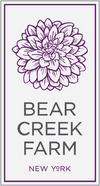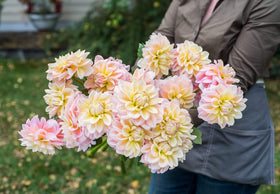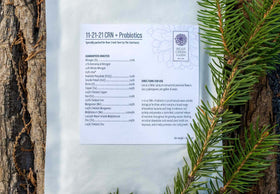Temperatures cool and fall foliage explodes in the northeast. Gardeners take a moment to catch their collective breath - alongside the falling crimson leaves set against a sapphire sky. Finally, there is time to reflect. Hot tea is once more appealing. The smell of firewood hangs in the crisp evening air. The earth quiets.
I have come to notice that many gardeners are taught that growing flowers is an exact science. They are coached that specific methods will produce a specific result. As a flower grower, I am here to argue that this kind of striving, while tempting in a certain way, is ultimately counterproductive. I urge gardeners to gift themselves grace and to consider the big picture, including their own place within it.
I believe that the act of growing a flower is less about a specific flower and more about the personal commitment it takes to place oneself in nature. I think it has to do with the benefits of learning to recognize the spontaneous beauty that always erupts when one uncouples oneself from precision and overly specific directions - pertaining to one flower, one seed, or one bloom.
While growing flowers certainly does require a kind of discipline, I think that overly prescribed formulas distract from the fundamental purpose of growing flowers in the first place. At Bear Creek Farm, I have learned not to follow instructions.
I have come to see growing seasons as quests. Each one is a kind of journey made in search of something deep within us. Something that calls us - and which we cannot ignore. For some, it is the perfect bloom - for others it is something less tangible. Nature, by itself, underpins a culture of untrammeled beauty. It is fragile – a dewdrop on a petal. It is strong - it keeps coming back. The work by a gardener, or the role of a bloom, is to complement that spontaneous beauty and to enjoy it.
Flowers are hard. Zones differ. Seasons are unpredictable. Soils aren’t the same. Late frosts occur. There are no formulas that will produce a specific result. Viewed through one lens, this is frustrating. It is hard to resist the temptation to compare the results of a grower one admires with one’s own product. Viewed through another lens, a move away from formulaic discipline can be liberating. If a specific flower coaxes you to a garden, that flower is telling you to look up. Maybe that was the only job it was meant to do.
Growing flowers requires a kind of patience and tenacity that challenges us all. It certainly does me. It is easy to become tense. That said, I take great comfort in my firm belief that growing flowers enables one to unspool energy that scaffolds a kind of personal context. It gives people a place in a vast beauty-scape. So? Look around. Cup your hands over your eyes and see where you are. Invariably, it is right where you should be.
 Growing is less about the flower or the bloom and more about the gardener or the grower. Pay less attention to directions which require overly specific combinations of soil, or suggestions that you should measure levels of nitrogen. These things may be useful in certain circumstances. But they tend to become a distraction as gardeners, intent on the one tuber, or the one seed – lose sight of the true purpose of their work. Working in partnership with nature is more like choreography than to straight-up, how-to direction. There is the need to improvise and to listen in to all the whisperings and the encompassing hush. To lean in to the all the moving and living things we did not ourselves grow, but which we can appreciate because there we are.
Growing is less about the flower or the bloom and more about the gardener or the grower. Pay less attention to directions which require overly specific combinations of soil, or suggestions that you should measure levels of nitrogen. These things may be useful in certain circumstances. But they tend to become a distraction as gardeners, intent on the one tuber, or the one seed – lose sight of the true purpose of their work. Working in partnership with nature is more like choreography than to straight-up, how-to direction. There is the need to improvise and to listen in to all the whisperings and the encompassing hush. To lean in to the all the moving and living things we did not ourselves grow, but which we can appreciate because there we are.
Flowers grow where they are planted – very often. But even when they don’t come up, pay attention to the space in which you worked. Allow yourself to be moved by the silver-flecked springtime breezy trees swaying over a carpet of unexpected blue flowers early in the spring. Nature is about you, and your own process of quest and discovery. To what end? Only you know. The best reason of all to plant is to find one’s place in nature and dwell there for a time. Relax and enjoy the beauty. It is all right there.






